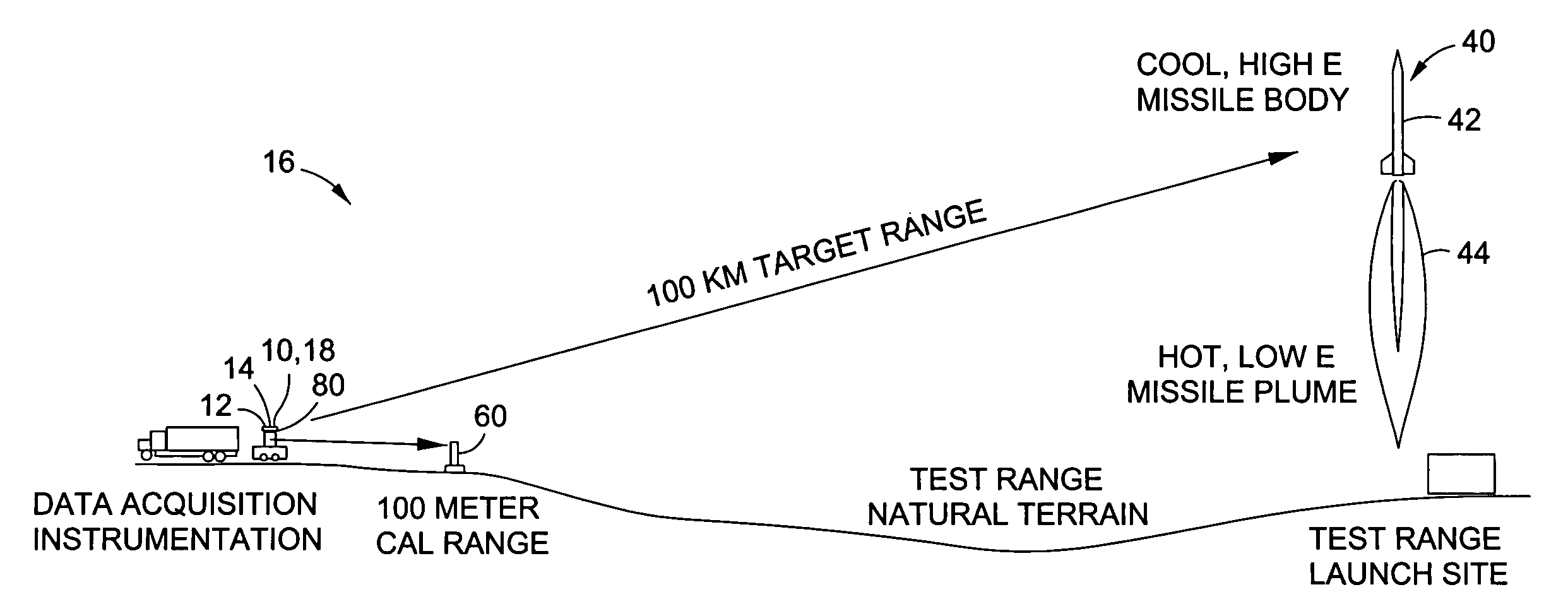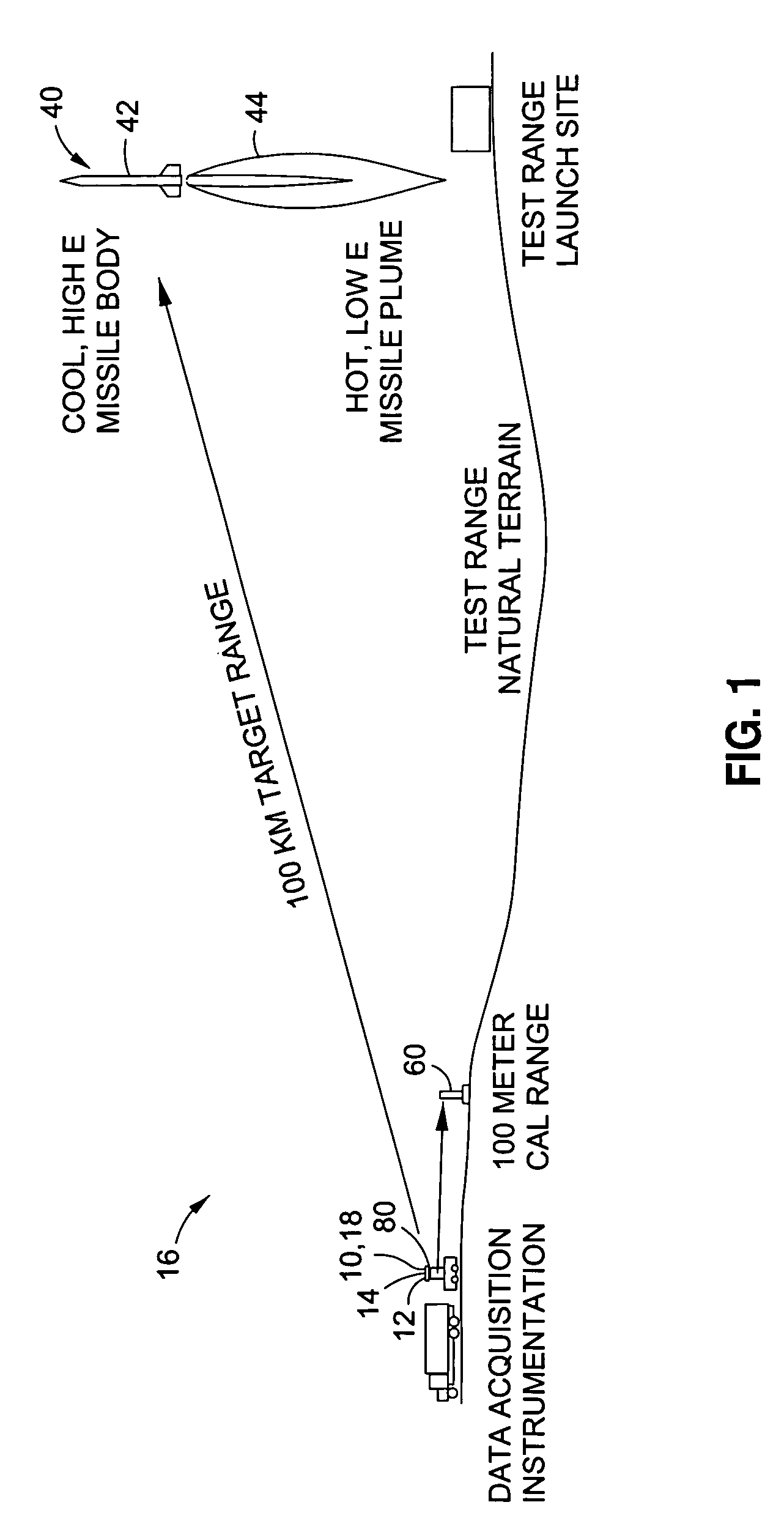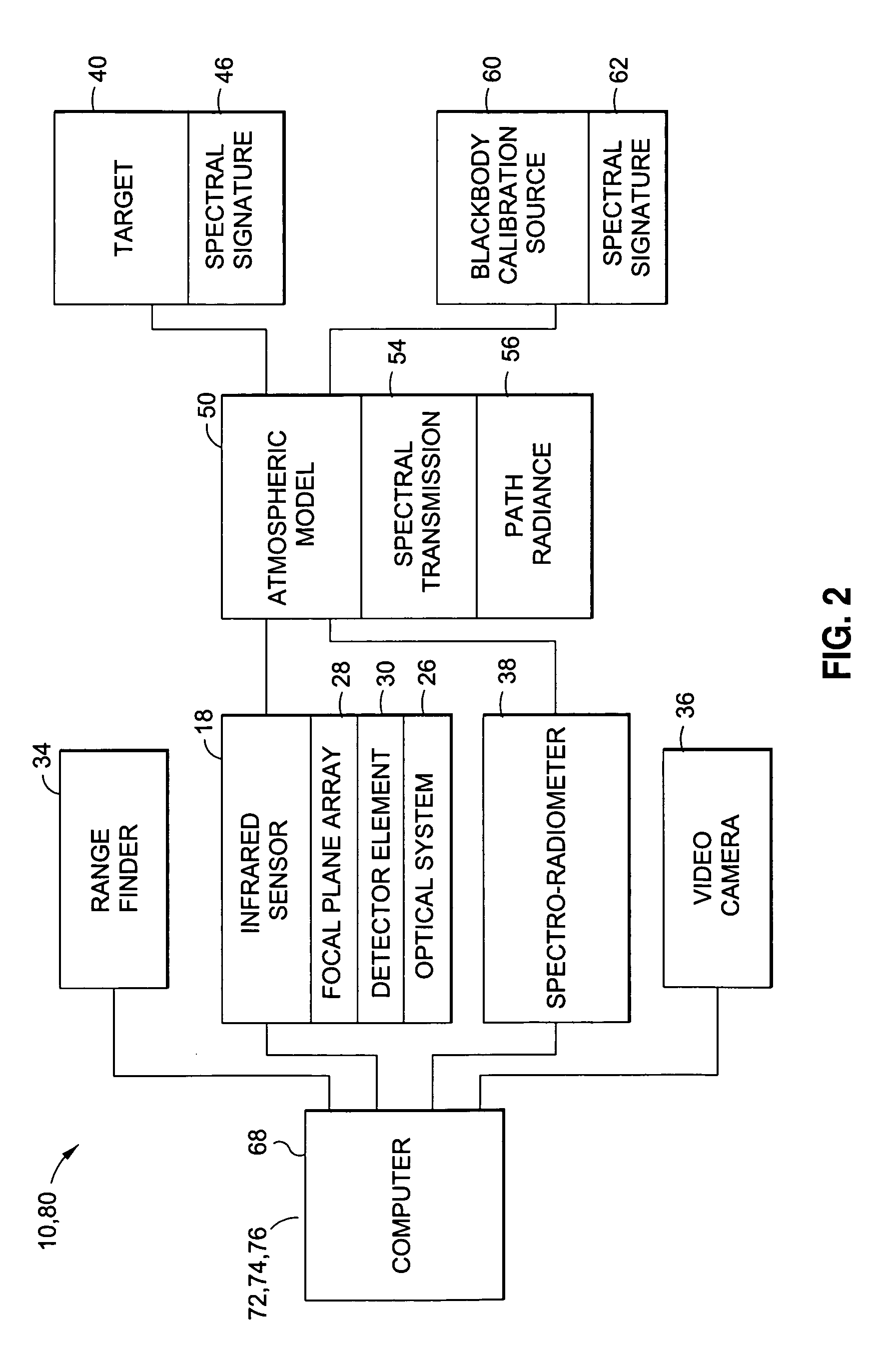Infrared sensor calibration system and method
- Summary
- Abstract
- Description
- Claims
- Application Information
AI Technical Summary
Benefits of technology
Problems solved by technology
Method used
Image
Examples
Embodiment Construction
[0035]Referring now to the drawings wherein the showings are for purposes of illustrating preferred embodiments of the disclosure and not for purposes of limiting the same, shown in FIG. 1 is an illustration of an infrared imaging system 10 for imaging a long-range (e.g., 100 km) target 40 such as a missile using a calibration system 80 for close-range (e.g., 10 m) calibration of an infrared sensor 18 using at least one and, more preferably, a plurality of blackbody calibration sources 60.
[0036]In a broad sense, the disclosed calibration system 80 is adapted to calibrate and configure at least one infrared sensor 18 (e.g., camera, spectro-radiometer) to enable setting of the infrared sensor 18 for accurate measurement of the long-range target signature. The calibration system 80 uses spectral data from a broad range of components in order to minimize the risk of saturation of the infrared sensor 18 during radiometric measurements of the target 40. Such components include, but are no...
PUM
 Login to View More
Login to View More Abstract
Description
Claims
Application Information
 Login to View More
Login to View More - R&D
- Intellectual Property
- Life Sciences
- Materials
- Tech Scout
- Unparalleled Data Quality
- Higher Quality Content
- 60% Fewer Hallucinations
Browse by: Latest US Patents, China's latest patents, Technical Efficacy Thesaurus, Application Domain, Technology Topic, Popular Technical Reports.
© 2025 PatSnap. All rights reserved.Legal|Privacy policy|Modern Slavery Act Transparency Statement|Sitemap|About US| Contact US: help@patsnap.com



